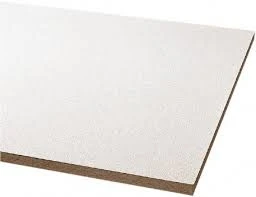- Afrikaans
- Albanian
- Amharic
- Arabic
- Armenian
- Azerbaijani
- Basque
- Belarusian
- Bengali
- Bosnian
- Bulgarian
- Catalan
- Cebuano
- Corsican
- Croatian
- Czech
- Danish
- Dutch
- English
- Esperanto
- Estonian
- French
- German
- Greek
- Hindi
- Indonesian
- irish
- Italian
- Japanese
- Korean
- Lao
- Malay
- Myanmar
- Norwegian
- Norwegian
- Polish
- Portuguese
- Romanian
- Russian
- Serbian
- Spanish
- Swedish
- Thai
- Turkish
- Ukrainian
- Uzbek
- Vietnamese
ታኅሣ . 13, 2024 18:54 Back to list
fibre false ceiling materials
Exploring Fibreglass False Ceiling Materials A Comprehensive Guide
When it comes to interior design and construction, false ceilings play a crucial role in enhancing aesthetics while providing functional benefits. One material that has gained significant popularity in recent years is fibreglass. In this article, we will delve into the various aspects of fibreglass false ceiling materials, exploring their advantages, disadvantages, applications, and installation processes.
What Are Fibreglass False Ceilings?
Fibreglass false ceilings, also known as fibreglass-reinforced plastic (FRP) ceilings, are a modern alternative to traditional ceiling materials. They are made from a composite of fibreglass and resin, providing a lightweight, durable, and flexible ceiling option. These ceilings come in various designs, colors, and textures, making them suitable for both commercial and residential applications.
Advantages of Fibreglass False Ceilings
1. Durability
One of the most significant advantages of fibreglass false ceilings is their durability. Unlike traditional materials such as gypsum or plaster, fibreglass does not warp, crack, or decay over time. It is resistant to moisture, making it an ideal choice for areas prone to humidity, such as bathrooms and kitchens.
2. Lightweight
Fibreglass false ceilings are significantly lighter than many conventional ceiling materials. This characteristic not only makes transportation easier but also reduces the load on the building's structure, which can be particularly beneficial during renovations or modifications.
3. Aesthetic Versatility
Fibreglass ceilings offer a wide range of design possibilities. They can be molded into various shapes and patterns, allowing designers to create unique and visually appealing interiors. The availability of different textures and finishes, including matte, glossy, or textured surfaces, adds to their aesthetic versatility.
4. Sound Insulation
Another notable benefit of fibreglass false ceilings is their sound insulation properties. The fibreglass material can effectively absorb sound, helping to reduce noise levels in busy environments, making them a great option for offices, restaurants, and educational institutions.
5. Easy Maintenance
Fibreglass false ceilings require minimal maintenance. They can be easily cleaned with a damp cloth to remove dust and stains. Additionally, their resistance to stains and mold helps maintain a clean appearance over time.
Disadvantages of Fibreglass False Ceilings
While fibreglass false ceilings have numerous advantages, they also have some drawbacks that should be considered
fibre false ceiling materials

1. Cost
Fibreglass ceilings can be more expensive than traditional materials like gypsum. The initial investment might be higher, but the long-term benefits can offset this cost.
2. Installation Complexity
Installing fibreglass false ceilings can be more complex than traditional ceilings. Professional installation is often recommended to ensure that the ceiling is properly secured and finished.
3. Limited Repair Options
In the event of damage, repairing fibreglass ceilings can be challenging. Unlike traditional materials that can be patched or painted, fibreglass may require complete replacement if damaged.
Applications of Fibreglass False Ceilings
Fibreglass false ceilings are suitable for a wide range of applications across various sectors
1. Commercial Spaces
Many businesses, including offices, retail stores, and restaurants, utilize fibreglass false ceilings for their aesthetics and acoustic properties. The ability to customize designs helps create an inviting atmosphere for customers and employees alike.
2. Residential Interiors
Homeowners often choose fibreglass ceilings in living rooms, kitchens, and bathrooms, leveraging their durability and moisture-resistant qualities. The variety of designs available allows homeowners to match their ceilings with their overall interior decor.
3. Industrial Use
Fibreglass false ceilings are also popular in industrial environments due to their resistance to chemicals and moisture. They are ideal for warehouses, manufacturing plants, and laboratories where traditional materials may not withstand harsh conditions.
Conclusion
Fibreglass false ceilings represent a modern and versatile choice for enhancing interior environments. Their blend of durability, aesthetic appeal, and functional benefits makes them an excellent option for various applications. While some disadvantages exist, particularly regarding cost and installation complexity, their longevity and minimal maintenance requirements can make fibreglass ceilings a worthwhile investment. As interior design continues to evolve, fibreglass materials are likely to remain at the forefront of innovative building solutions, offering both beauty and practicality in design.
-
Transform Interiors with PVC Gypsum Ceiling: A Stylish, Durable, and Moisture-Resistant SolutionNewsMay.19,2025
-
The Smart Interior Upgrade: Discover the Durability and Versatility of Gypsum Ceiling Access Panel SolutionsNewsMay.19,2025
-
The Smart Choice for Interior Design: Discover the Value of PVC Gypsum Ceiling SolutionsNewsMay.19,2025
-
Mineral Fiber Ceiling Tiles: The Smart Blend of Performance and AestheticsNewsMay.19,2025
-
Mineral Fiber Ceiling Tiles: The Superior Choice Over Gypsum for Sound and Fire SafetyNewsMay.19,2025
-
Mineral Fiber Ceiling Tiles: Eco-Friendly Strength and Style for Every CeilingNewsMay.19,2025







